In order to solve the problem of eating, the Chinese teach African friends to plant rice | Share before bedtime
Author:Jiefang Daily Time:2022.09.16
The rice is cooked.
In April 2022, in a paddy field in southern Africa, rice seeds from China came out with heavy rice ears. Prior to this, Botswana's land had not grown rice for a long time.
After the outbreak of the new coronary pneumonia in 2020, Botswana entered the country's emergency state. This food relies on imported countries to face the risk of grain break. After a local overseas Chinese contacted the Shanghai Agricultural Biology Center team, a group of water -saving drought -resistant rice seeds drifted across the sea to Africa. After two years of cultivation, it was finally harvested.
Under the haze of the global epidemic, as a major grain crop, the self -cultivation ability of rice has never become a hidden worry like today. In order to ensure the safety of food, in addition to Botswana, many African countries such as Uganda, Burundi, Kenya, Nigeria, Ghana, Bravine Faso ... all of the water -saving and drought rice species developed by Chinese scientists.
Now, we start from Shanghai, go to 10,000 miles to see how these seeds take root in Africa and how to grow full of full rice ears.
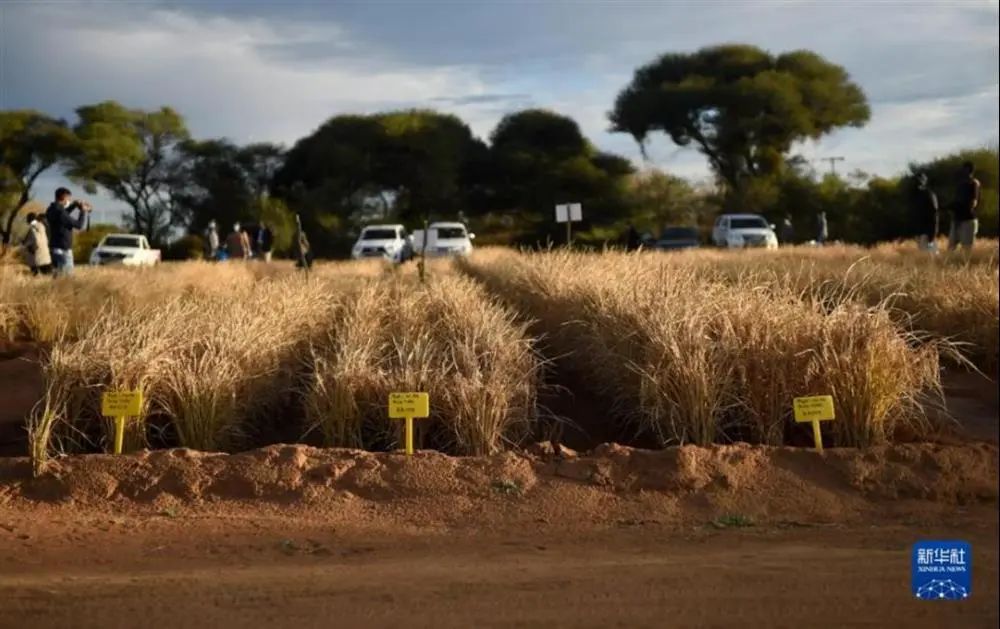
On June 27, Botswanahablo's water -saving drought -resistant rice test field in China. Xinhua News Agency (Photo Photo by Cezot Barlo)
A call for help
The sun shines in the rice fields in Habaro, the capital of Botswana.
On June 27, 2022, the "China Rice Harvest Day" ceremony was carried out here. The Chinese ambassador to Botswana, Wang Xuefeng, and President of Botswana, went into the rice test field together, picked up the sickle to harvest the rice, and celebrated the harvest.
At the ceremony, there were more than one Botswana people with emotion. They ate rice every day, but never knew how rice grew up. This time I finally saw it. Nan Gengxuan, who was also celebrated at the ceremony, felt relieved that everyone's efforts were not in vain.
Everything starts from the vital telephone two years ago. One day in June 2020, Nan Gengyi paced back and forth in the living room, and finally made up his mind to call the Rollene army.
Nan Gengyu is the chairman of African Agricultural Co., Ltd. and African Mile Group, and the president of the China -Africa Civil Exchange and Cooperation Promotion Association. Since he came to Botswana to start a business in 1999, he lived a busy life between China and Africa every month, "hundreds of times fly each year." But in the past two years, the epidemic interrupted frequent work travel.
The same stagnation is Botswana's grain import. The main food crops eaten by local people in Botswana are corn, sorghum, and rice, and most of them depend on imports.
In 2020, because of the outbreak of the country, the freight truck could not enter Botswana, and the grain transport line that survived was interrupted. This is why Nan Gengxu was going to the Luoli Army, the chief scientist of the Shanghai Agricultural Biology Center, the reason for calling.
"When it comes to planting rice, the Chinese are experts. I think China has a great land. There is always a region soil and climate similar to Botswana, and there are always rice that can be planted in Africa." Nan Gengyu recalled.
Although a agricultural company had registered 10 years ago, Nan Gengyi, the business in the agricultural field, has never really involved. After the outbreak, the "eating problem" made him have to start paying attention to agriculture. He was looking for information on drought -resistant crops on the Internet, and the name of Luoli Army appeared in the search results.
According to the data, the water-saving and drought-saving rice that Relly leads the team developed by the team has reached 700-750 kg per mu. At present, the planting area of water -saving drought -resistant rice in multiple provinces in China has exceeded 3 million mu, and it has been extended to countries along the “Belt and Road”.
Nan Gengxu felt hopeful in Botswana breeding rice, but there are still many questions in his heart.
"I am very relaxed to talk to you now, but two years ago, when I contacted Professor Luo in the same location, I still had a lot of concerns." Nan Gengxuan said. He is not sure if Shanghai, which is far away from the earth, can provide appropriate seeds, and whether the planting test spanning 10,000 miles will be successful.
Luo Lijun was also impressed by the call. "At that time, he found me and said that there was no food in the local area, and he was very anxious." Ten thousand kilometers, Luo Lijun was moved by the enthusiasm and desire of overseas Chinese to improve the lives of locals, and decided to try it. try.
The Shanghai Agricultural Biological Gene Center originally had projects that cooperated with Africa, but at that time, the country's cooperative countries did not include Botswana. Researcher Liu Zhichang is the main person in charge of the African project, and Luoli Army arranges him to dock with Nan Gengyu.
"At that time, I felt that there was no reason for this matter." Nan Gengyi said. He has been doing business in Botswana for more than 20 years. He is familiar with the local people's conditions, and has accumulated a lot of resources with government agencies and all walks of life, but very little in agricultural technology. After getting technical support from China, he has doubled his confidence.
In order to introduce drought -resistant rice, Nan Gengxu's African Agricultural Co., Ltd. signed a memorandum with Botswana Agriculture and Natural Resources University to quickly set up an innovative agricultural center to promote drought -resistant crops, including water -saving drought and drought -resistant rice. The most suitable varieties of the breeding and cultivation are promoted across the country.
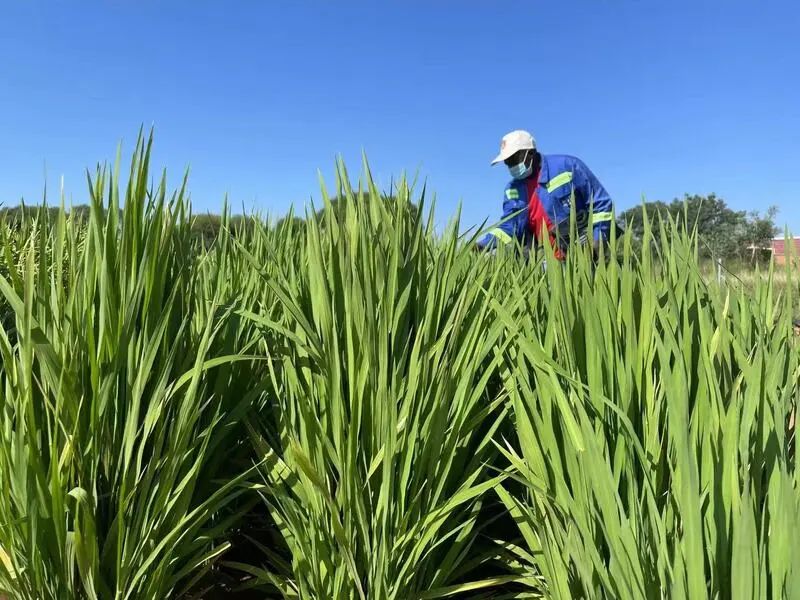
During the growth of drought -resistant rice, technicians inspected the field. (Photo confession in the respondent)
One academic steering
Soon, a technical symposium for agricultural experts between the two countries was held online. Experts can decide what seeds can be sent by discussing specific soil environment and climatic conditions.
In order to choose the right variety, the researcher Liu Zhichang made a comprehensive understanding of Botswana. This is located in the inland countries in southern Africa. It is located on the south backbone. The terrain belongs to the plateau, with an average altitude of about 1,000 meters. Most areas are tropical grasslands climate, and the west is a desert and semi -desert climate. The average annual temperature is 21 ° C, and the average annual precipitation is only 400 mm. In order to increase the probability of successful trials, in addition to Shanghai's team, Nan Gengyi also contacted relevant experts in Anhui and Jiangsu. In the end, the three places provided 7 kinds of drought rice seeds to enter the trial process. The drought -resistant rice varieties provided by the Shanghai Agricultural Biological Gene Center are "WDR73" based on low -carbon emission water -resistant drought -resistant rice "WDR73" based on "drought and excellent 73" and improved resistance.
Compared with traditional rice, water -saving drought -resistant rice is more than 50%of water -producing fields with water irrigation, and the yield per mu can reach 750 kg. Even in the wasteland and mountain -changing land, it can reach more than 600 kilograms of yield.
Many years later, when an agricultural scientist Luoli Jun introduced water -saving drought -resistant rice, he still remembered the "decisive moment" more than 20 years ago.
An ordinary weekend in 1998, Luo Lijun, who was working as a visiting scholar at the Institute of International Rice Institute, accidentally read an article about agriculture and water resources. A set of data in the article attracted his attention. The amount of water used in rice accounted for 70%of the entire agricultural water consumption, and the amount of agricultural water consumption accounted for 70%of the total national water. In the industry environment with "increasing production" as the main goal, the Luo Li Army suddenly realized that "water -saving" should also be an important direction for research.
"It was only this idea to let China's water support the rice in China." Luo Lijun said. In 2001, he led the team to Shanghai and formed the Shanghai Agricultural Biological Gene Center, which officially opened the transformation of the research direction to develop "water -saving drought and drought rice" as its main goal.
Water -saving and drought -resistant rice must not only solve the problem of water saving, but also all the problems related to it. Drought is not only related to rainfall, groundwater volume, but also inseparable from air humidity and wind direction. How to survive in drought conditions and achieve high yield at the same time is a systematic problem.
"20 years. We finally understand these problems now." Luo Lijun said. On November 3, 2021, the project "Creation, Protection and Research and Utilization of Rice Genetics Resources" hosted by Luoli Army won the first prize of the National Science and Technology Progress Award. This is the first prize in the selection of the National Science and Technology Progress Award after eight years after eight years.
In recent years, water -saving drought -resistant rice has cultivated dozens of new varieties that adapt to the climate and environment in many places. In Shanghai, the most famous variety of water -saving drought and drought rice is "August". This is a variety tailored according to the land resources of Shanghai.
Due to the limited area of Shanghai cultivated land, in order to ensure production, the biggest advantage of August Xiang was that the harvest time of traditional rice was shortened by two months. The rice that was originally harvested in October could be "fragrant" in August. In the two months of saving, you can choose to wait for another round of harvesting for another round, and you can also plant other economic crops. No matter how you choose, farmland has achieved value -added.
What is more revolutionary is that it has changed the planting method of rice for thousands of years. Farmers who plant water -saving drought -resistant rice do not have to insert rice, cultivated land, and irrigation fields like the past, but can sow seeds directly before the rainy season. Moreover, because of the reduction of irrigation, the fertilizer taken away during the loss of water is also reduced. Planting water -saving drought -resistant rice does not have to be fertilized as frequently as in the past.
"Touring the roots, we are all children of farmers. One of the motivations for our development is to reduce the burden on the labor of some farmers." Luo Lijun said.
Science never stops. "There are still new problems waiting to be resolved. Under extreme high -temperature weather like this summer, how to further optimize our drought -resistant varieties is a question we need to think about." Luoli Jun said.
Two foreign trials
After solving one after another in the domestic environment, the seeds of China have gone to the world.
However, in Botswana, the test of drought -resistant rice is not successful at one time.
"That bag of seeds has gone from Shanghai to Habolne for more than a month." Liu Zhichang remembered. Due to the epidemic, the global logistics lag, the express delivery that can be reached in five or six days has passed through a long turn to Africa. After a series of processes such as customs clearance, quarantine, and import permits, it has been two months after receiving seeds.
The seeds are late, the most direct reason for the failure of the first year of trial planting. Seeds from China only started sowing from December to January, and missed the best sowing season in Botswana.
"Although the first trial, although Miao grew well, it started a little bit in March and April. At that time, the temperature of Botswana was already very low, and the temperature at night was below 10 ° C." Liu Zhichang said.
Although the first trial has failed, the project will continue. Liu Zhichang studied Botswana's meteorological data and analyzed the local heat and rainfall data. Finally, the conclusion was drawn. Mature before arrival.
After the time problem was solved, the new challenge appeared again. The geological conditions of Botswana's land are not uniform, and the desertification in some areas is severe. The most ideal state is to sow before raining. After the seeds go down, there will be rainwater to irrigate once to promote rice seedlings.
However, after the second trial, after the test field was sown, there was a continuous drought in the local area, and there were no rain in many days. Finally, when it was raining, because of the severe soil desertification, the surface layer was hard, and the sunlight was easy to end. Nan Gengxuan remembered that after the first sowing, he waited for the left and right, and finally germinated more than ten days later. "In theory, we should see germination 5 to 7 days, but at that time, we could not ensure that the soil was moist before germination, so that seedlings could drill out of the ground. Now it seems to have accumulated some experience." Nan Gengxuan said.
The area of the trial field covers an area of about five or six acres. The planting team is mainly composed of students from local farmers and agricultural universities. However, Nan Gengyu ran to the rice fields across the three forks, and wanted to see the growth situation with his own eyes.
The period when I was waiting for germination in the early stage was the most torment. Later, he discovered that there would be worries at each stage. Soil environment, temperature, humidity, pests and insect pests ... Errors may occur in any link.
"Because in the test, you can't miss each ring. You have to observe how it is in the local natural environment and whether it can survive." Nan Gengxuan felt a string in his heart.
"He often sends me pictures and videos on WeChat, and sometimes discuss growth to see if there is any illness or insect pest." Liu Zhi remembered that during that time, after 6 hours of time difference, he always received at night. The news from Nan Gengzheng from the Earth. Accompanied by "remote teaching", Liu Zhichang discovered that the rice in Botswana field was "growing very strong", and the scion and grouting were smooth.
In April, on the land of Botswana, the drought resistance welcomed a harvest. Before the celebration ceremony, how to remove the granules into a new problem. Botswana, who has just started to plant rice, has not had time to follow up on agricultural equipment.
In the end, Liu Zhichang sent a small household rice mill to Botswana. "You can buy it on Taobao, and now the logistics recovers, they received in less than two weeks."
At the ceremony, Nan Gengzheng contributed his own rice cooker, and rice drifting in the field. Botswana who usually eat brown rice normally praise rice from China. Everyone even brought the harvested straw home as a memorial.
Nan Gengxuan felt a little moved. "After decades, the Botswana people talked about the rice that they eaten every day. They could think of the seeds from China growing up, so all the efforts I made today are worth it."
Uganda water -saving drought -resistant rice WDR73 demonstration fields before harvesting (interviewee confession)
More stories in the future
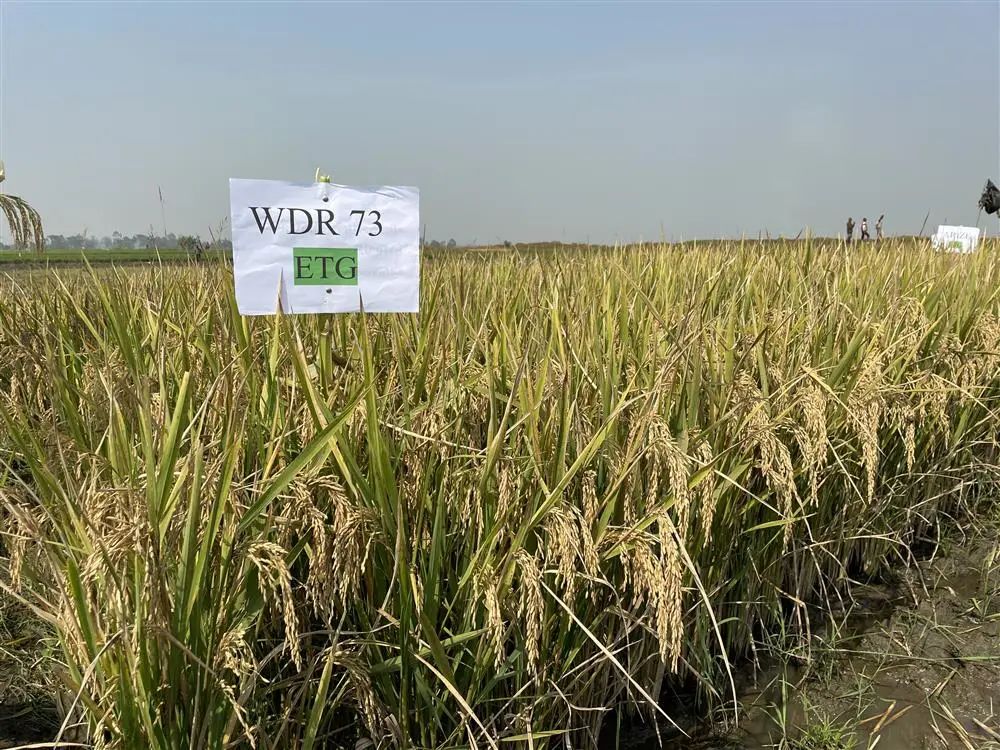
After the successful trial, Botswana hopes that rice fields can harvest every year, which requires more people's long -term efforts.
Despite successful experience, there are still many planting techniques that need to be accumulated -how to soak, apply medicine, remove insects ... to grant people to fish, and people need to give people fishing. Nan Gengxuan intends to ask domestic experts to come to Botswana. "We hope to be able to invite domestic experts to participate in this quarter test in October this year and guide on the spot."
Agriculture is by no means an emergency work. Planting from experiment to promotion is not a merit overnight. In the 1970s, Agricultural experts in East Asia had tried rice in Botswana, but with the end of the project a year or two, the planting also came to an end.
"If our variety wants to really promote planting in other countries in other countries, we must first go through the approval of the local government. The process of trial species is also preparing for the approval." Liu Zhichang introduced. Such a review is not a time. Usually it takes three or five years of repeated trials and testing, and cooperates with the local agricultural and animal husbandry research institutions to get the final conclusion.
When Botswana was successful for the first time, Liu Zhun's long -handed rice cooperative country -Uganda's rice project has entered the audit and promotion stage.
Technician inspections in the field (the interviewee confession)
"We have thousands of acres of trial area every year in Ukanda." Liu Zhichang introduced. In Uganda, his partner is Dr. Jimmy Lamo from the National Agricultural and Animal Husbandry Research Agency (National Academy of Agricultural Sciences).
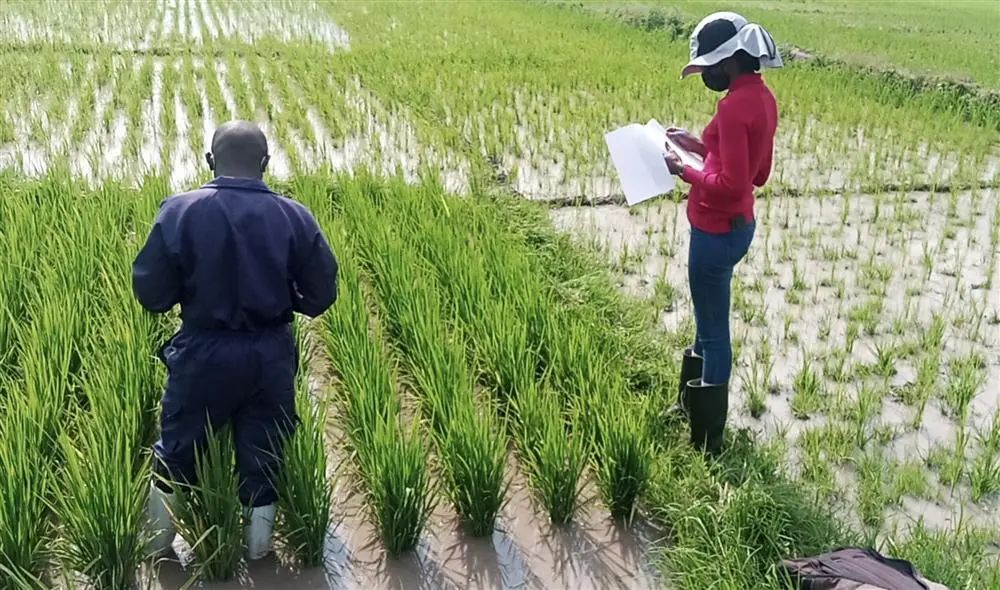
Ramo said that in Uganda, although China is far away, it is no stranger. The roads and bridges built in China can be seen everywhere in this country. Therefore, three years ago, when Chinese rice seeds appeared in the planting options, Uganda farmers were very willing to try. "Commodities from China are always rich in categories, low quality and cheap, and are very popular in Uganda. This has given many Uganda for many Uganda. People have left a good impression. I think this is one of the reasons why the seeds of Chinese rice are very smooth. "
The more important reason is that Chinese rice has brought them a considerable economic return. Jimmy Ramo introduced that the rice grown in Uganda farmers usually leave 10%to eat, and the remaining 90%are used for sale. The price of rice is $ 1.3 per kilogram. A recent blind test results showed that drought -resistant rice from China was the most popular among the five varieties participating in the test.
"It's delicious, it tastes sweet and soft." Ramo said. In order to help Uganda farmers grow better drought -resistant rice, Jimmy Ramo often communicates with them. Local farmers told him that Chinese rice seeds were very high -yielding, because the mature period was short, farmers could plant rice twice a year. In addition, China's rice varieties are high in vitality, uniform maturity, strong stems, and resistance, and also have the advantages of resisting common pests and insect pests.
As a rice breeding expert with 24 years of development experience, Ramo believes that China -Africa agricultural cooperation has many advantages. Since 2014, Uganda has obtained more than 600 categories from China through the green super rice projects implemented with the International Rice Research Institute. In the past few years, there are three Chinese rice varieties entering the approval procedure. "They are very thoughtful, not only introduce our varieties, but also try to develop new varieties suitable for local seeds on the basis of Chinese seeds." Liu Zhichang said.
At present, Uganda, Kenya, Nigeria and other countries have seeds from China in the promotion approval stage.
On August 20, good news came from Burundi. After several local rounds of national tests and new varieties, the WDR73 of low -carbon emissions water -saving rice -resistant rice from Shanghai finally received varieties review. This means that there is another country that can formally develop drought -resistant rice.
Improving rice planting technology and building the toughness of the food system is an important measure to ensure food safety. Nowadays, water -saving and drought -resistant rice from China is contributing to the world's grain problems.
In order to better promote and cultivate seeds in Africa, there are currently China -Africa cooperation projects. It plans to establish hybrid seed production bases in Africa and train local scientists. Chang Liu Chuan has instructed a doctoral student Modinat Adekoya from Nigeria.
After completing a doctoral dissertation at the Shanghai Agricultural Biology Center, Modonat returned to Nigeria to work in colleges and universities, and taught more people to learn rice planting technology in China.
There will be more new stories to grow Chinese seeds on African land in the future.
Liberation Daily · Shangguan News Original manuscript, reprinting without permission
Author: Li Chuyue
WeChat editor: Antong
School pair: huisong
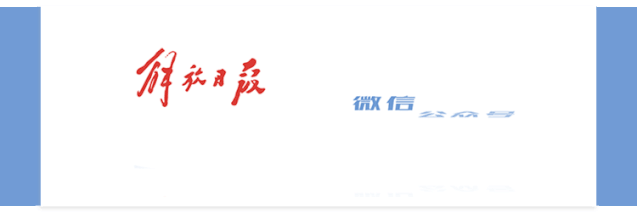
- END -
Make the beautiful peace vision into reality
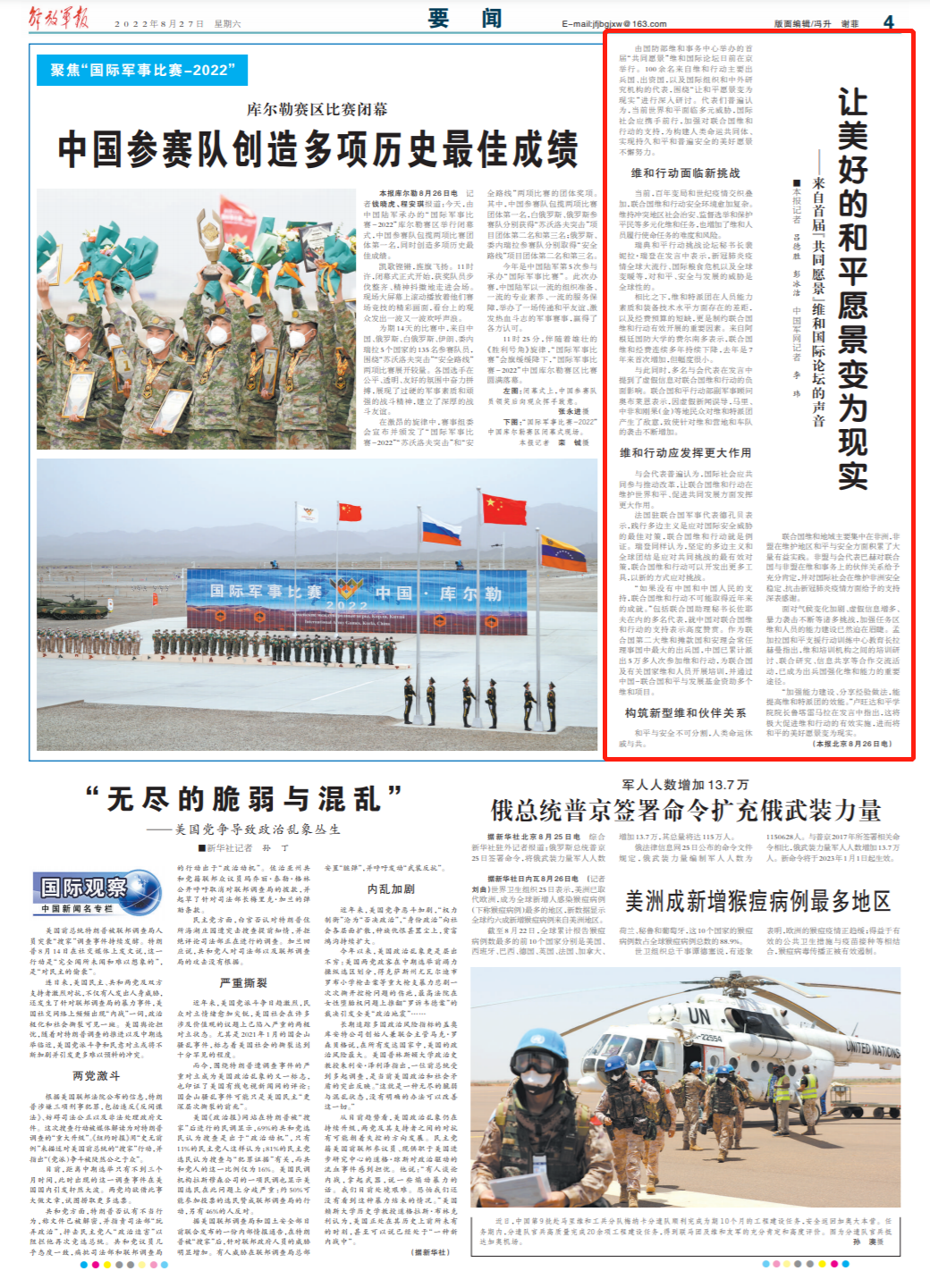
Make the beautiful peace vision into reality——On the sound of the International ...
There is an appointment in the starry sky 丨 the same day as Teacher's Day, only three times this century
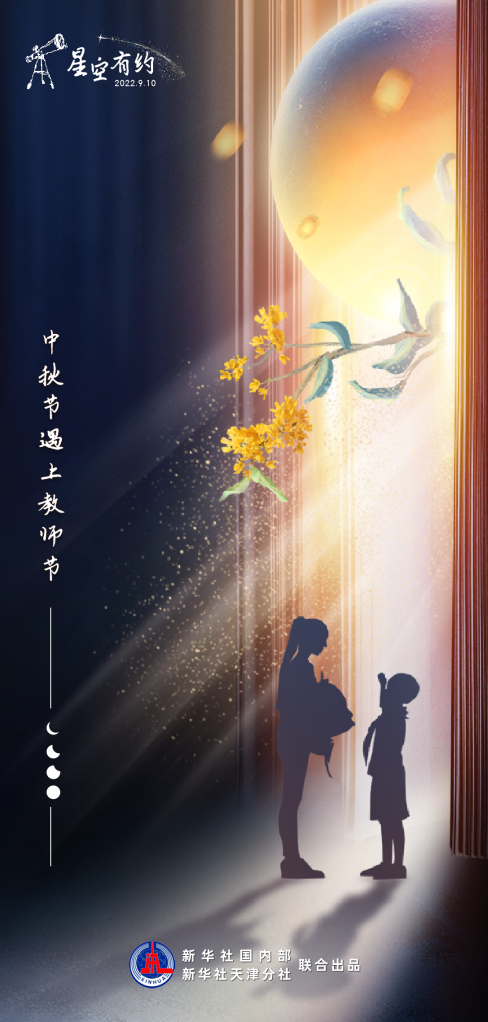
Xinhua News Agency, Tianjin, September 7 (Reporter Zhou Runjian) The Mid -Autumn F...